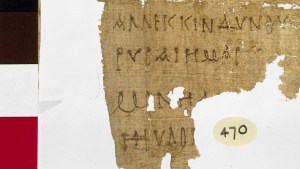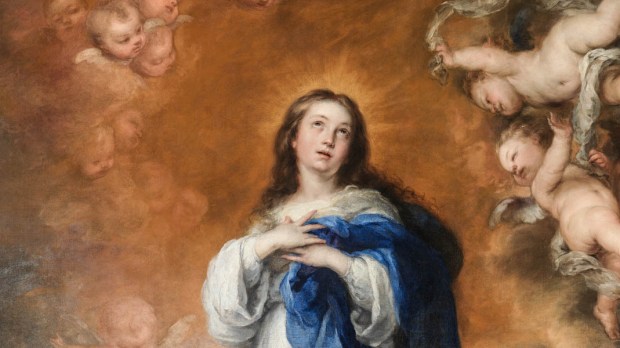In the year 431 there was a fierce debate raging in the Catholic Church regarding a specific title of the Blessed Virgin Mary. The debate required a rare Ecumenical Council at the city of Ephesus to resolve the issue.
Two different arguments were presented, one by Bishop Nestorius of Constantinople and the other by St. Cyril of Alexandria.
Nestorius firmly believed that Mary should be called Christotokos, “Birth-giver of Christ” (also translated as “Christ-bearer”). Fr. Dwight Longnecker explains that “Nestorius used language that was perceived as asserting that there were two separate persons conjoined in Jesus Christ. Thus the Blessed Virgin Mary in giving Jesus human flesh could be the ‘Christ-bearer’ but not ‘God-bearer.'”
On the other hand, St. Cyril and a great number of bishops believed that Mary should be called Theotokos, “Birth-giver to God” (also translated as “God-bearer” or “Mother of God”). This terminology affirmed that Jesus is “one person in two natures which are united.”
It was determined by an overwhelming majority that Theotokos was the correct title for Mary, and Nestorius was subsequently removed from his position as bishop of Constantinople.
The title “Mother of God” does not mean Mary somehow existed before God or created God, but that Mary gave birth to Jesus, who is fully God and fully human.
The Catechism puts it like this, “In fact, the One whom she conceived as man by the Holy Spirit, who truly became her Son according to the flesh, was none other than the Father’s eternal Son, the second person of the Holy Trinity. Hence the Church confesses that Mary is truly ‘Mother of God’ (Theotokos)” (CCC 495).
The Orthodox and Byzantine tradition of Christianity continue to use this title of Mary, preferring it to any other of her titles. An ancient hymn in their liturgy poetically summarizes this complex truth, “He whom the entire universe could not contain was contained within your womb, O Theotokos.”
Read more:
In Orthodox iconography, the Virgin Mary is also the Burning Bush
The decision to name Mary Theotokos was a pivotal point in the Church’s history. It clarified the Church’s belief in Jesus Christ and gave further confirmation regarding the nature of Christ’s incarnation. What the Church believed about Jesus since apostolic times was ratified at the Council of Ephesus.
Furthermore, the granting of this title confirmed Mary’s privileged role in salvation history and deepened understanding of the great mystery that occurred in her womb.
To honor the memory of this council, Pope Pius XI in 1931 established the feast of the Divine Maternity of Mary on October 11, which after the Second Vatican Council was transferred to January 1 and renamed the Solemnity of Mary, Mother of God.

Read more:
One of the prayers Pope Francis asked for this month is the most ancient Marian prayer

